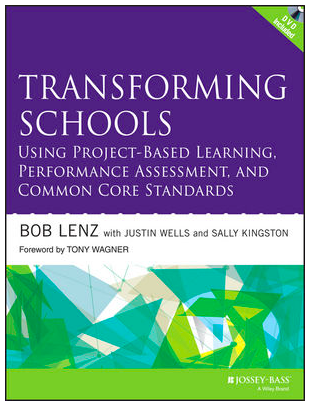Integrated classrooms make a big difference for traditionally underperforming students because in such classrooms they learn to adjust to higher expectations and can see the connection between success and effort. Students who have not been in academically rigorous classrooms have not had exposure to high expectations from their teachers. They don’t understand the effort that high-performing students make in and out of class. They believe that those students are simply “smart,” and they really do not make the connection between effort and grades. For underperforming students, this is a wake-up call. Although that call can be very frustrating to low-achieving students at first, it also can inspire them to work toward the standards set by their peers.
High-performing students in integrated classrooms push their teachers to create challenging and fast-paced lessons and projects. Without these demanding voices, a teacher just might lower his or her expectations for students. That’s much less likely to happen in a class with well-prepared students, so teachers learn to keep high standards for all the kids.
A universal concern of parents and educators about integrated classrooms is that struggling students consume teachers’ time, taking away from what higher-performing students need. At Envision, we have observed that this is more of a fear than a reality. High-performing Envision students apply and are accepted to competitive colleges and universities, similar to their peers in other high schools.
Integrated classrooms provide all students with a diverse learning space to develop deeper learning skills that transfer to college and the workplace. By learning to collaborate and communicate with students with backgrounds different from their own, students will be more prepared to succeed in an increasingly diverse workplace.
Educators who are interested in dismantling tracking are frequently apprehensive about including all students in college-prep courses, and they typically have these three questions in common:
* Will we dumb down the curriculum?
* Is it fair to put so much pressure on students who are not prepared? Can’t we prepare them in remedial classes and then have them take college-prep courses?
* Isn’t all of this difficult for the teacher?
After ten years of persisting through ongoing challenges associated with integrated classrooms, we have answers to these questions. It is important to note that you cannot just create integrated classrooms and assume that the structure is self-sustaining. These classrooms need to be nurtured and adjusted to meet the dynamic challenges of changes in teacher and student assignments. The answers we offer in this section are not intended to be the answers, but rather to provoke your thinking about how you can liberate your students from the shackles of tracking.
Curriculum in integrated classrooms is not dumbed down at Envision Schools. As we have noted elsewhere, teachers use rubrics that align to Envision’s graduate profile and the Common Core State Standards. Well-designed projects offer multiple entry points into the curriculum for students performing at all levels.
 Of course, not all students enter ninth grade academically prepared for these academically rigorous courses. This means that Envision teachers need to differentiate and scaffold their curriculum, using PBL and other teaching methods. They use teacher-created formative assessments and diagnostics to identify students who will require specific interventions in reading, language, or math to accelerate their learning.
Of course, not all students enter ninth grade academically prepared for these academically rigorous courses. This means that Envision teachers need to differentiate and scaffold their curriculum, using PBL and other teaching methods. They use teacher-created formative assessments and diagnostics to identify students who will require specific interventions in reading, language, or math to accelerate their learning.
We believe not only that it is fair to push underperforming students but also that it is our moral obligation to hold all students to high standards and provide targeted support to help them through high school and beyond. Envision’s mission—to transform the lives of students—drives our organizational energy and resources. We also believe in a growth mindset, which is why we created integrated classrooms that explicitly and tacitly communicate to students and their families that all students can do it. We think it is unfair not to push students.
Finally, integrated classrooms do pose challenges for teachers. Like teachers in tracked classrooms, Envision teachers have to have a high level of content knowledge and pedagogical prowess, and a deep understanding of what motivates students. In other words, teachers have to be at the top of their game. Other Envision Schools structures enable integrated classrooms, and integrated classrooms would not work at Envision without teacher teams, cohort scheduling, advisories, professional development, common planning time, and parent-student-advisor conferences.
In California, only 35 percent of students graduate from high school having taken the required UC and CSU courses. The percentages are much lower for poor students and African American and Latino students. At Envision Schools, 100 percent of students graduate having taken the required courses. Contrary to the statistics and some people’s expectations, it is possible for all students to be college-prep kids.



